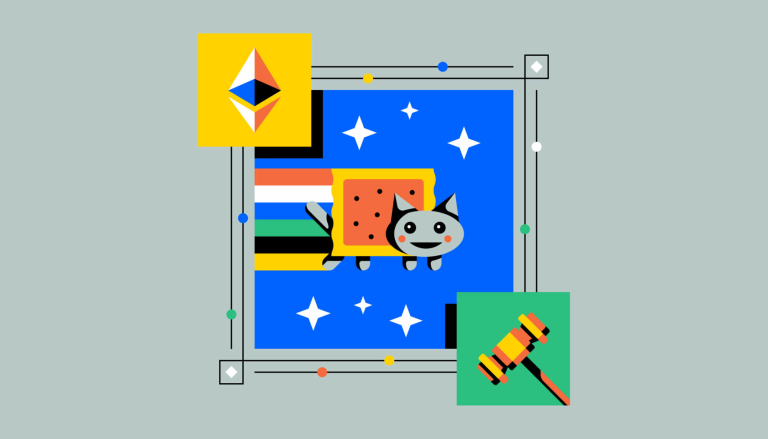What is NFT art?

NFT art refers to digital assets stored on a blockchain that represent content or physical items.
NFT art allows artists to transact their artwork beyond the physical world.
NFT art may potentially offer different financial outcomes compared to traditional art as the artist can set the commission percentage and receive a royalty each time it is transacted.
Understanding NFT Art
NFT art is a digital asset that the holder owns and can transact on a blockchain platform. The transaction of NFTs is a means of transacting digital art without building an extensive network. Blockchain transactions take place on NFT marketplaces, reducing the obstacles of self-promotion. To engage in transactions involving NFT art, a digital wallet is required to handle cryptocurrency on blockchain platforms such as Ethereum or Bitcoin.
The Difference Between NFTs and Traditional Art
NFT art and traditional art vary in many ways. In some cases, NFT art may potentially offer different financial outcomes as the artist has the ability to set the commission percentage. Unlike traditional art, it can be transacted with the artist receiving a royalty each time. Some of the other notable differences include storage, transaction venues, audience, and market volatility. Traditional physical art requires storage space, while NFT art requires a digital file that’s stored with blockchain technology. Traditional art can be transacted online, in art galleries, and through auction houses, while NFT art is transacted online at NFT marketplaces.
Advantages of NFT Art
Digital art may potentially have different production costs compared to traditional art. Traditional art requires materials that can be expensive, such as paints, brushes, and canvases. Digital art requires minimal resources to get started. Programs such as Adobe Photoshop and Illustrator provide the tools to create digital art, and drawing tablets and apps are also available. Digital art offers more freedom to manipulate color without damaging the paper or canvas. Other advantages include a new way to generate income and opportunities to receive royalties on future transactions.
The History of NFT Art
The movement of NFTs started in 2012-2013 with the introduction of Colored Coins, which were part of a bitcoin and can represent multiple assets. After Colored Coins paved the way, several others realized the potential of blockchains. Blockchains are virtual ledgers that record transactions via virtual code. Transactions are recorded in the block, and the chain keeps track of everything.
How NFTs are Changing the Art Industry
NFTs are changing the art industry by providing a new platform for artists to transact their work. They provide a different approach for artists to receive compensation for their work and reach a global audience. NFTs also aim to provide a level of transparency that may not be present in the traditional art market. With NFTs, the ownership and provenance of a piece of art can be easily verified, which can help to prevent fraud and forgery.


